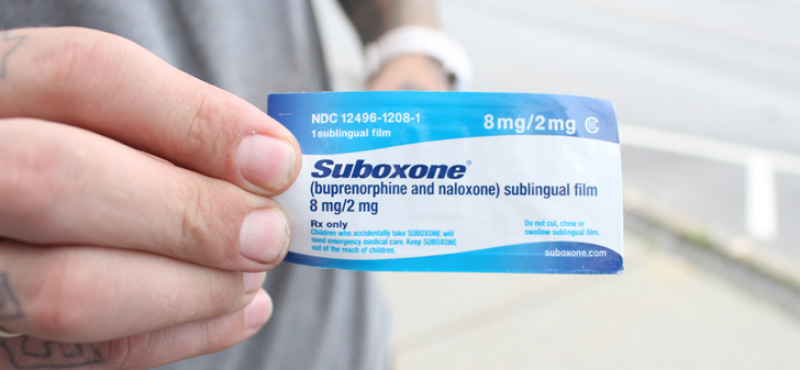
If you’ve been looking at ways to quit using opioids, chances are you’ve come across the drug Suboxone. This is becoming a more popular way to deal with addiction. It’s an opioid analgesic that professionals are prescribing to opiate addicts as a way to ease the discomfort. It contains buprenorphine and naloxone, otherwise known as Narcan. There has been a lot of debate over whether Suboxone is a healthy treatment option or if it creates more dependency. Let’s take a look at some facts.
What Is Suboxone?
Buprenorphine has been used since 1985 as a mild to moderate pain reliever prescribed by doctors. It is best used when given in lower dosages.
Naloxone has been a popular remedy to reverse the damaging effects of opiates during an overdose. It was generally given by a doctor or emergency room professional.
Suboxone is a mixture of these two medications.
For Withdrawal Symptoms
Suboxone is supposed to limit the opiate addict’s withdrawal symptoms while trying to get sober. It is said to reduce the frequency plus intensity of opiate cravings. If this is true, then it is a safer alternative to the withdrawal of harmful opiates such as morphine, Fentanyl and heroin.
To protect the safety of a patient, treatment centers that administer Suboxone will slowly reduce the amount given until the patient is no longer taking any opiates.
The problem with this philosophy is that many patients end up with a dependence to Suboxone, as a result of an extended treatment plan. What was intended to break someone’s addition to an opiate has actually created a new one. Each year, emergency room visits due to buprenorphine-related overdoses are climbing.
Strong Pain Relief
The effects of buprenorphine, when used in the medical field, are impressive. It can provide pain relief which is 20 to 30 times greater than what is achieved through morphine. This leads to a sense of calm, relaxation and even mild euphoria in the patient. When used for the treatment of pain, buprenorphine is effective. Nevertheless, dealing with withdrawal symptoms for an addict is a different story.
There are numerous pitfalls when we attempt to take this strong pain reliever and give it to an addict trying to get sober.
Short and Long-Term Side Effects
Obviously, there is a risk of addiction when a patient begins taking Suboxone, but let’s take a closer look at some other short and long-term effects of this drug. The most common are:
- Insomnia or sleepiness
- Confusion and Irritability
- Depression or Anxiety
- Jitteriness or Shaking
- Trouble breathing
- Nausea
- Pain in the Joints
- Feelings of Being Isolated
When someone abuses Suboxone or takes it in combination with alcohol or benzodiazepines, the results can be disastrous. Suboxone abuse leads to respiratory failure, extreme lethargy and even death.
Because Suboxone is a long-lasting opioid, its effects can last up to three days after use. This means that acute reactions tend to be lower than some other opioids. In addition, the effects will be less intense but more drawn out. Obviously, the biggest overall concern with Suboxone usage is creating another addiction.
Suboxone Abuse
Buprenorphine has been used by physicians for 10 years as an alternative treatment option for opioid-addicted patients. As the years go by, the amount of Suboxone prescriptions being filled is on the rise. Here are some interesting statistics from the Drug Enforcement Administration you should know.
- Fewer than 16,000 physicians were permitted to prescribe Suboxone as of 2013 in the United States.
- In 2012, 3 million prescriptions were written for buprenorphine. This includes the combination of Suboxone and the buprenorphine medication known as Subutex.
- Between 2006 and 2011, the number of ER visits related to buprenorphine issues quintupled.
By looking at these startling statistics we can see that there are serious problems related to the misuse and abuse of Suboxone. According to other reports, buprenorphine-related emergency visits increased from just over 3,000 in 2005 to over 30,000 in 2010. Does that alarm anyone? In 2010, those ER visits mainly resulted from the nonmedical use of the drug.
More doctors are prescribing buprenorphine for addiction, without the thought of what is happening to all the addicts who are taking it. Now, treatment centers throughout the country are offering Suboxone as a way to deal with opiate addiction. In the process, more people are finding themselves addicted to the drug.
Addiction to Suboxone can be just as powerful as addiction to opiates. There are just as many withdrawal effects when a person attempts to stop using Suboxone. They can experience flu-like symptoms as well as vomiting, headaches, muscle pains, depression, insomnia, chills, sweating and fevers.
What are we supposed to do if we find ourselves addicted to Suboxone?
Quitting Suboxone
During the withdrawal period, it is normal to experience negative feelings related to the sudden loss of buprenorphine in the bodily system.
Trying to attempt to quit on your own power can lead to serious consequences. Without professional guidance, Suboxone detox can be so overwhelming that you often have no choice but to relapse just to deal with the discomfort.
These symptoms of Suboxone withdrawal tend to peak within 72 hours of the last dosage. During the first week of the detoxification, users might experience severe mood swings and insomnia. During the second week free of Suboxone, it is normal to have depression set in. At one month after taking Suboxone, users still experience depression, intense cravings, and physical discomfort. Within the first month is when you are most vulnerable to a relapse.
Heading to a Treatment Center
Trying to quit Suboxone cold turkey isn’t wise. There are treatment options available where you can detox safely.
Because the detox of Suboxone can last so long, it is recommended that addicts seek help from a qualified treatment facility. Medical professionals at these respected centers will help to relieve withdrawal symptoms while creating a treatment plan that works for the patient. Taking these important steps ensure that relapse is less likely to occur.
If you are concerned about your Suboxone addiction or that of someone you love, you have every right to be alarmed. This medication is dangerous, addictive and rarely helps those seeking to quit opiate abuse.
A quality treatment center is going to seek to heal the entire body without the use of more addictive medications. It is time to clear your head and start living life again. Join with a local center and begin the process of healing. Partake in activities such as therapy and peer support from others who have walked in your shoes. You deserve a fulfilling life free from addictive substances. You deserve to feel again.
Contact Clearbrook Today
If you or a loved one has found themselves addicted to Suboxone, it is time to get help from a team of professionals.
Here at Clearbrook Treatment Centers, we can provide you with a customized detoxification protocol and treatment plan that suits your individual needs. Before you leave us, you will have the necessary tools to assist in ongoing recovery and complete abstinence.
If you are interested in coming to treatment today, let’s start the admissions process now!
Please contact us today and get on the road to recovery.







